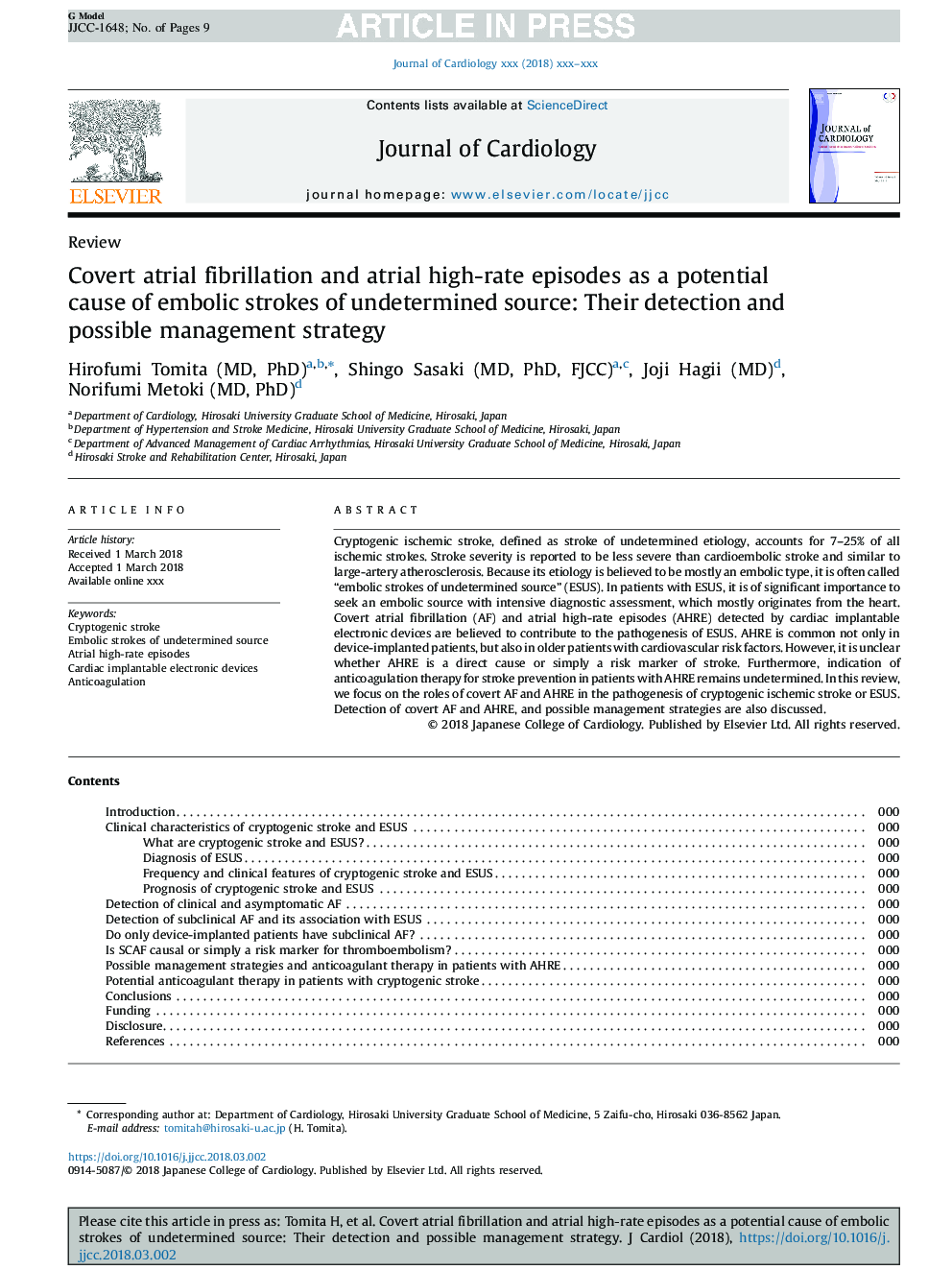| Article ID | Journal | Published Year | Pages | File Type |
|---|---|---|---|---|
| 8667833 | Journal of Cardiology | 2018 | 9 Pages |
Abstract
Cryptogenic ischemic stroke, defined as stroke of undetermined etiology, accounts for 7-25% of all ischemic strokes. Stroke severity is reported to be less severe than cardioembolic stroke and similar to large-artery atherosclerosis. Because its etiology is believed to be mostly an embolic type, it is often called “embolic strokes of undetermined source” (ESUS). In patients with ESUS, it is of significant importance to seek an embolic source with intensive diagnostic assessment, which mostly originates from the heart. Covert atrial fibrillation (AF) and atrial high-rate episodes (AHRE) detected by cardiac implantable electronic devices are believed to contribute to the pathogenesis of ESUS. AHRE is common not only in device-implanted patients, but also in older patients with cardiovascular risk factors. However, it is unclear whether AHRE is a direct cause or simply a risk marker of stroke. Furthermore, indication of anticoagulation therapy for stroke prevention in patients with AHRE remains undetermined. In this review, we focus on the roles of covert AF and AHRE in the pathogenesis of cryptogenic ischemic stroke or ESUS. Detection of covert AF and AHRE, and possible management strategies are also discussed.
Related Topics
Health Sciences
Medicine and Dentistry
Cardiology and Cardiovascular Medicine
Authors
Hirofumi MD, PhD, Shingo MD, PhD, FJCC, Joji MD, Norifumi MD, PhD,
